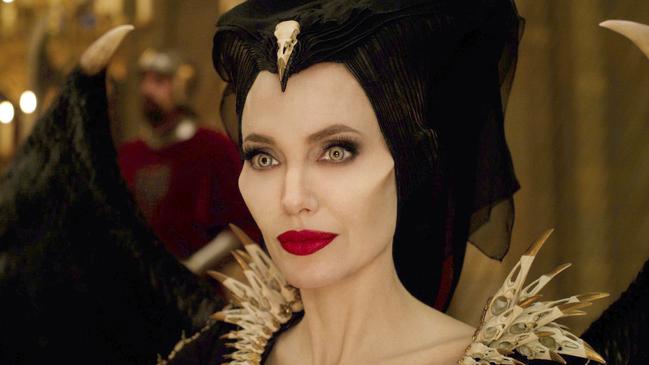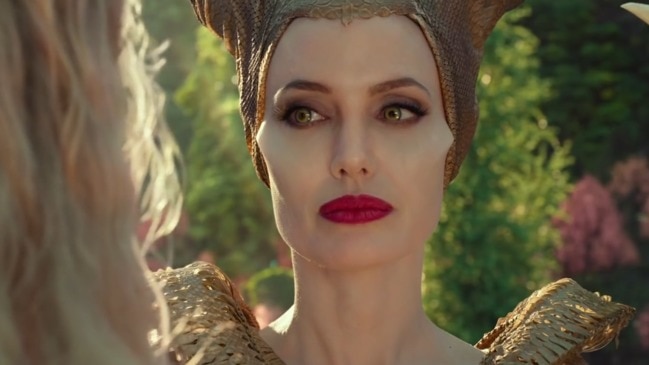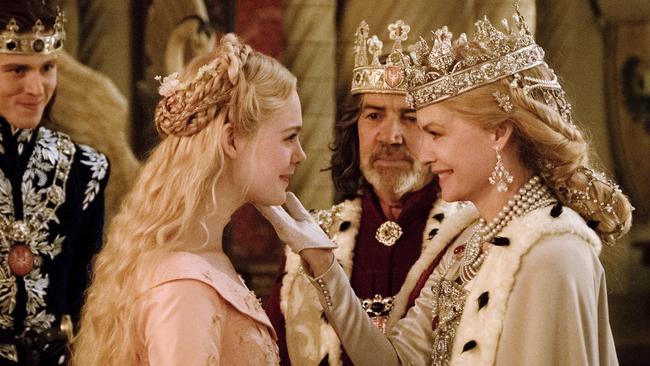Maleficent: Mistress of Evil wastes its greatest asset
Five years ago, Disney and Angelina Jolie surprised us with a mischievous and fun retelling of a fairy tale. The sequel? Not so much.

New Movies
Don't miss out on the headlines from New Movies. Followed categories will be added to My News.
Angelina Jolie’s Maleficent redefined the well-known fairytale of the beautiful princess cursed by an evil, embittered witch.
Jolie’s Wicked-esque revisionist Maleficent was wry and playful, a glint of devilishness in her eye mixed in with the vulnerability of someone who’s been betrayed by love. Jolie made the 2014 Disney movie such a great experience — it had something new to add to a well-worn classic and anchored it with such a winning performance.
So it’s weird that the sequel, Maleficent: Mistress of Evil, directed by Joachim Ronning, didn’t lean on its greatest strength, instead almost downplaying that mischievous Jolie performance by giving her less to do, and then overblowing everything else.
If you want something visually inventive but mostly spectacle, then Maleficent: Mistress of Evil will likely satisfy, but if you’re looking for all that and the heart and whimsy of the first Maleficent, you may be left wanting.

Set five years after the events of the first film, Aurora (Elle Fanning) has really settled in as the Queen of the Moors, living a magical life among the fairies with her godmother Maleficent watching over her.
When she accepts Phillip’s (Harris Dickinson) proposal of marriage, it’s a time for celebration for the two young lovers but also for Phillip’s father, the kindly King John (Robert Lindsay), who’s excited at the prospect of uniting the two realms in peace.
Maleficent is, understandably, sceptical about the union. But the real opposition, albeit stealthily, comes from Phillip’s mother, Queen Ingrith (Michelle Pfeiffer).
The Queen hatches a plan to provoke Maleficent so she can further her propaganda war, and then eventually actual war, against the fairies and magical creatures.

Maleficent: Mistress of Evil is an excessive CGI fest that relies far too much on effects and grand battles, not to mention a disturbing genocide and biological warfare plot line that may be hard to explain to younger kids.
It siphons Maleficent off into a side plot away from the main action which effectively robs the core story of Jolie’s presence, and everyone suffers from it. While Pfeiffer does what she can with what’s been written on the page, her duplicitous Queen’s characterisation is fairly rote.
The movie spends a decent chunk on a massive battle sequence, which, while bright and colourful, has a lot going on and goes on for too long. There’s little discipline applied and you really feel every minute of the movie’s two-hour runtime.

The pluses include the visual renderings of the seemingly expanded catalogue of Moors creatures, and the fellow dark fae (played by the likes of Chiwetel Ejiofor and Ed Skrein) Maleficent discovers, including the underworld cave in which they’ve retreated, invoking the secret playground of How to Train Your Dragon: The Hidden World, but much more muted.
Maleficent: Mistress of Evil is a more conservative movie than its predecessor. It doesn’t seek to up-end our expectations or offer anything to challenge the status quo.
It has a warm and fuzzy message at its core about unity over division, love over fear, but it embraces fairy tale conventions far more than you would think for Maleficent’s follow-up, and it doesn’t really progress the story or the characters.
That’s adequate if all you’re trying to do is retell a well-known story with few surprises, but given that the first movie did much more than that, you can’t help but be disappointed in its sequel.
Rating: 2.5/5
Maleficent: Mistress of Evil is in cinemas from Thursday, October 17
Share your movies and TV obsessions | @wenleima
Originally published as Maleficent: Mistress of Evil wastes its greatest asset

